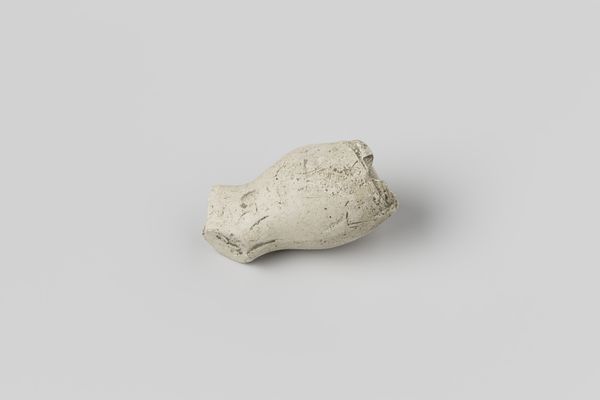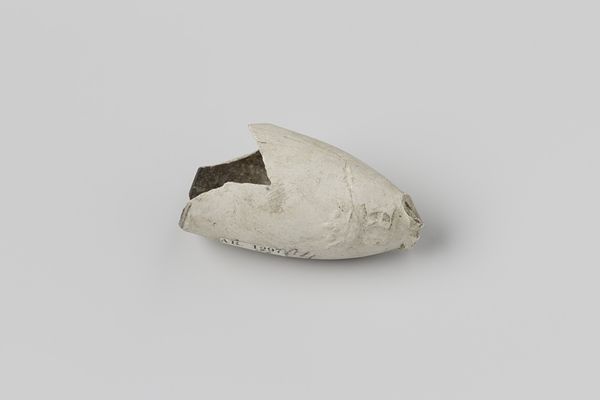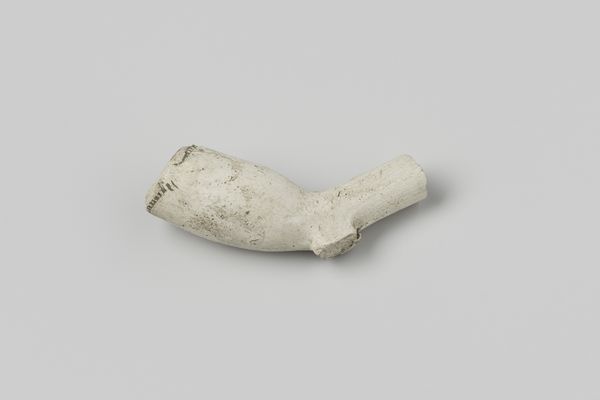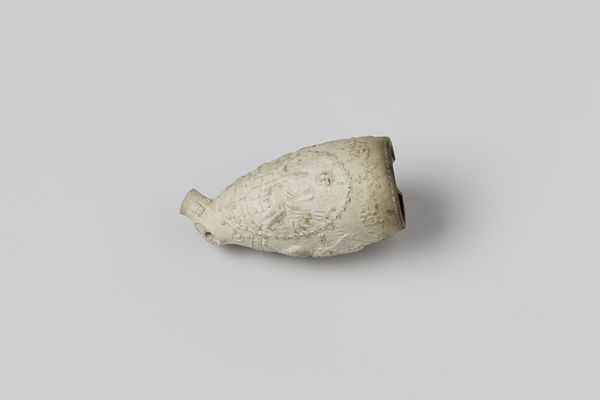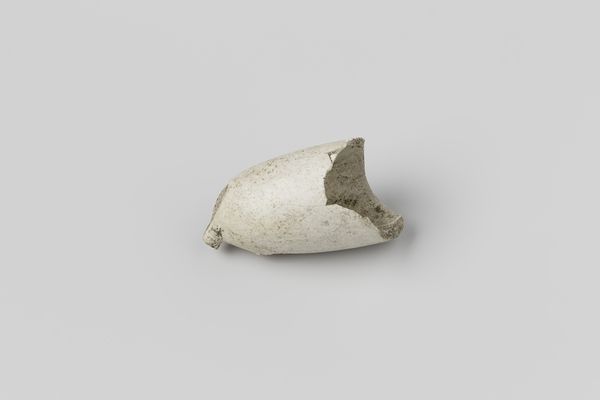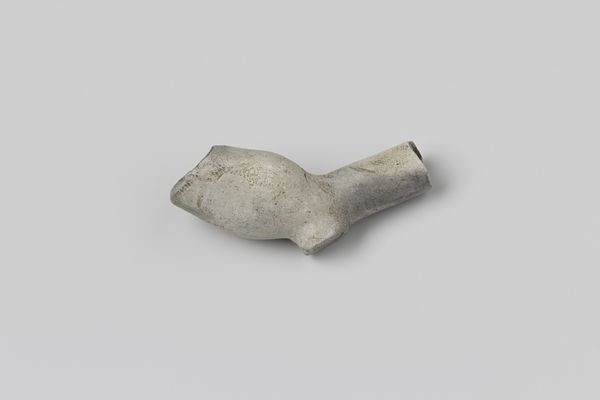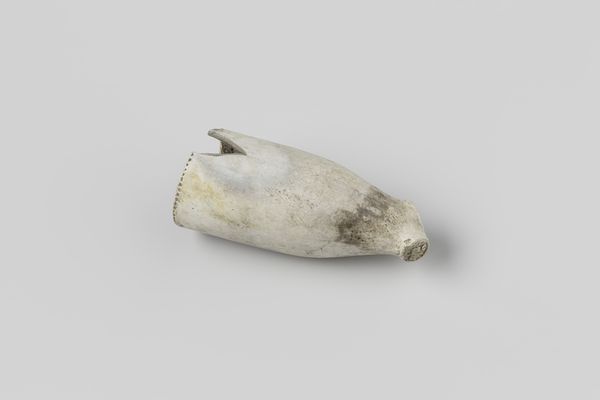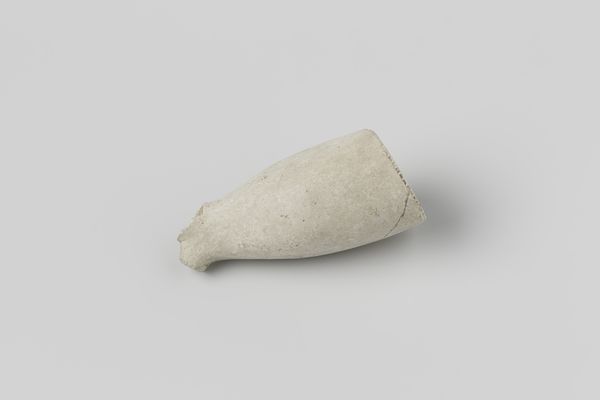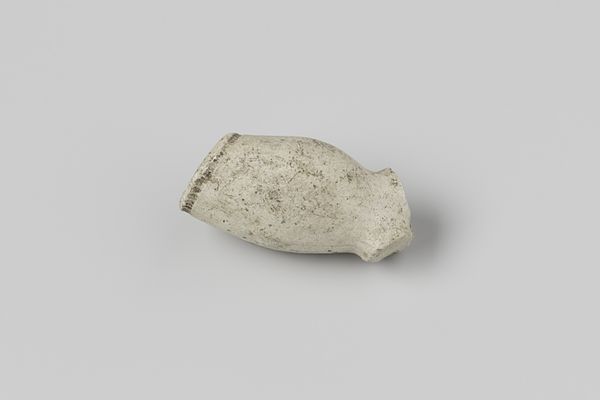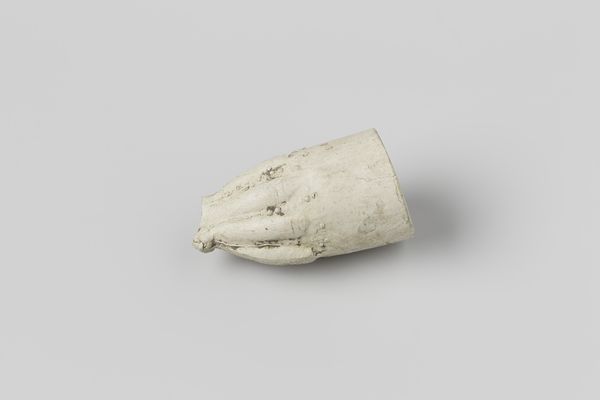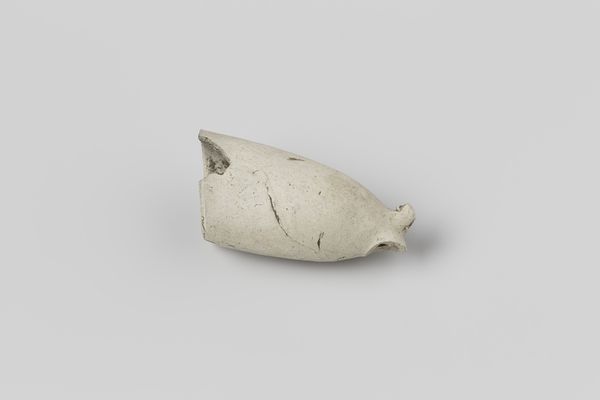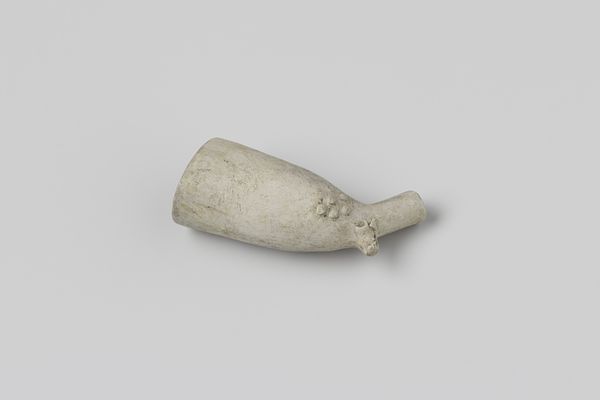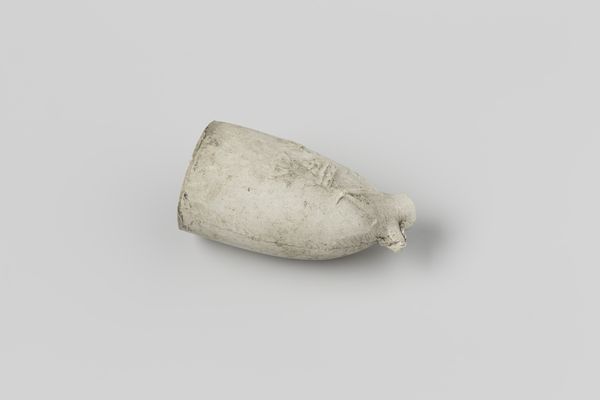
ceramic, earthenware
#
dutch-golden-age
#
ceramic
#
earthenware
Dimensions: length 3.6 cm, width 2.0 cm
Copyright: Rijks Museum: Open Domain
Editor: This object is titled "Fragment Pijpenkop," dating back to between 1650 and 1670, attributed to Arij Tobiasz. de Seeuw. It’s rendered in ceramic earthenware, and what strikes me is the starkness of the object – the smooth grey tones and its fragmentary state create a mood that’s simultaneously humble and ghostly. How do you interpret this seemingly simple form? Curator: The object, a broken clay pipe bowl, offers a study in form and surface. Note the tactile quality achieved through the visible roughness of the earthenware. The broken edge reveals the materiality, while the worn, subtly coloured surface hints at use and age. Consider the interplay between the smooth curves intended by the maker and the jagged disruptions of its fragmentation. How do these competing forms interact, would you say? Editor: That's interesting. It almost feels like a dialogue between creation and destruction – the perfect arc of the bowl versus the abrupt break, a conversation about the pipe's function against its current uselessness. Curator: Precisely. It also creates a tension between presence and absence. We perceive what is no longer complete. Think, then, about what meaning the artist ascribed to this incomplete object by deeming it worthy of aesthetic consideration. What are your thoughts on the utility and aesthetics of this broken earthenware? Editor: I hadn't really considered that before! Seeing the focus as a negotiation between beauty, history, and form elevates the object to something beyond just a broken pipe. Curator: Indeed. Appreciating the formal tensions allows us a richer encounter. Editor: Absolutely. It really encourages you to consider the formal elements rather than automatically jump to historical assumptions.
Comments
No comments
Be the first to comment and join the conversation on the ultimate creative platform.
